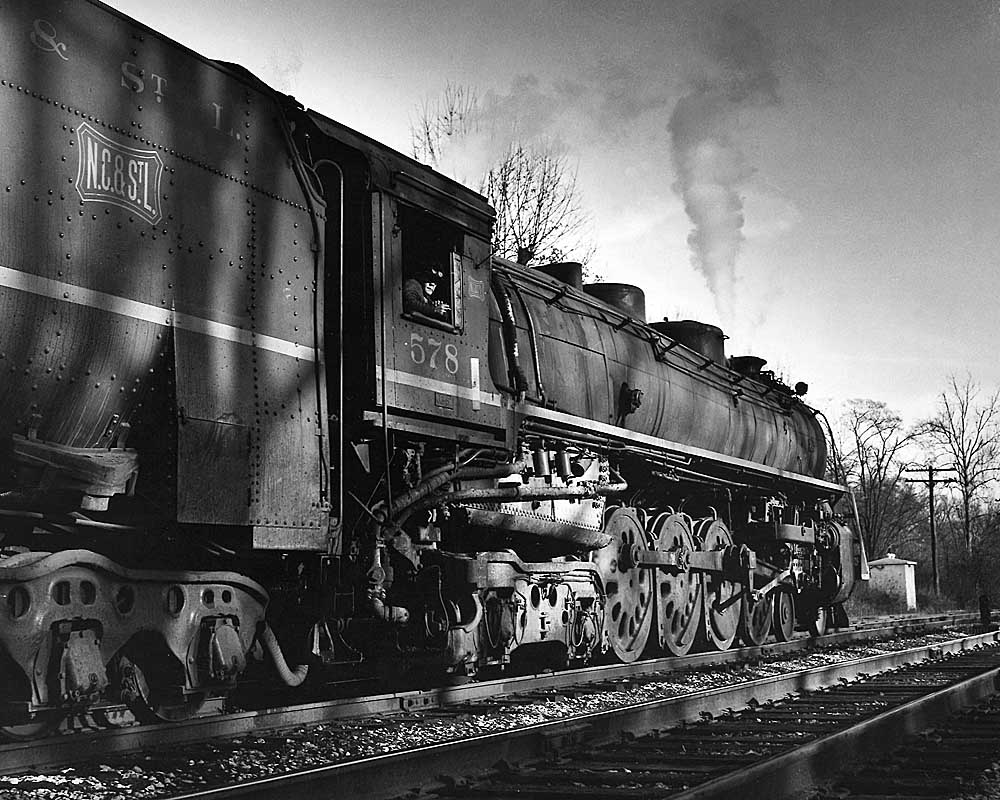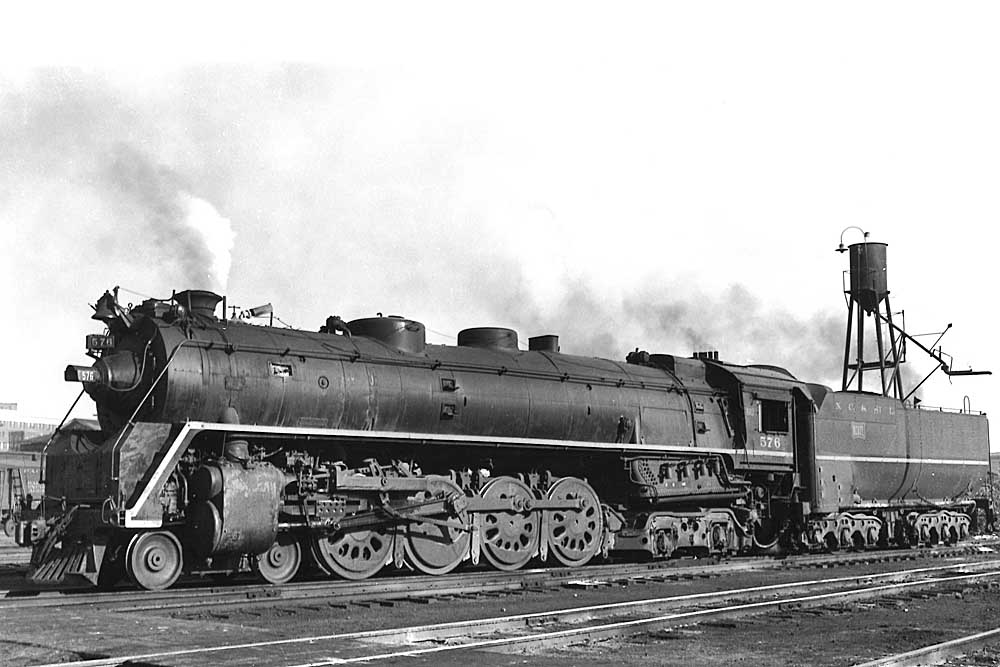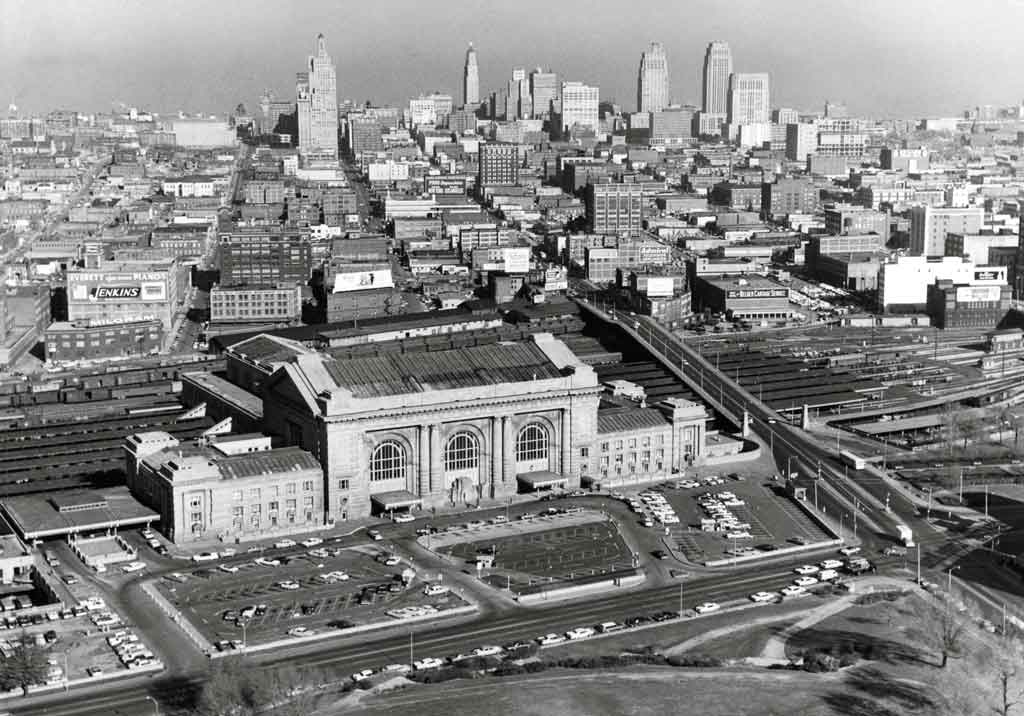The 4-8-4 steam locomotive wheel arrangement was exemplified in the South by the Nashville, Chattanooga & St. Louis Dixies.

Of all the regions in the U.S., the South had the fewest of what might be called the ultimate dual-service “modern” steam locomotive, that is, engines with four-wheel trailing trucks, especially 4-8-4s. An agrarian economy and a general lack of heavy industrial infrastructure before World War II meant the old South was home mostly to USRA-influenced 2-8-2s, 4-6-2s, 2-10-2, along with the later addition of 2-8-4 Berkshire types on several roads. There were a few 4-8-4s below the Mason-Dixon Line, though: 27 on Richmond, Fredericksburg & Potomac, 12 on the Atlantic Coast Line, even 8 on the Central of Georgia.
Then came the 4-8-4s of the Nashville, Chattanooga & St. Louis, a total of 25, the first 5 coming in 1930 and the rest in two groups of 10, all comparatively state-of-the-art engines delivered by Alco in 1942-43. Called “Dixies” on the NC&StL (the term “Northerns” would have been a non-starter), these latter engines were quintessential war machines, ordered in the teeth of World War II. By 1942, NC&StL had concluded it could keep up with surging traffic only by acquiring more power, despite those five J2-class 4-8-4s from 1930 already on the property. So, the Nashville-based railroad, owned then by Louisville & Nashville, went big on the Dixies.
By all accounts from NC&StL management and engine crews, the J3-class engines performed heroically, nicely fulfilling their dual-service missions for what was essentially a bridge line. With their 70-inch driving wheels, they could dig into any kind of freight train NC&StL was running, but also perform effectively in passenger service. The new engines doubled the railroad’s 1940 rate of ton-mile production and quadrupled its passenger miles.
Their impact was especially critical along the 151.7 miles of the Chattanooga Division between Nashville and Chattanooga, including the 1.5% ruling grade over Raccoon Mountain and a 2.5% grade over Cumberland Mountain. As Trains Magazine Editor David P. Morgan would write, “NC&StL required locomotives that would work freight and passenger trains interchangeably, make time, and keep their feet in the mountains.” And they did it with style: some of the semi-streamlined engines boasted a conical nose over the smokebox, and skirting or striping along the running boards of the two groups led to the nicknames Yellow Jackets or Stripes.
The Dixies also benefitted from a host of refinements that had come along since those first 4-8-4s of 1930, including one-piece cast engine frames with integral cylinders, roller bearings on all axles, and lateral driving boxes on the first two driving axles. Engine crews grew to love those driving boxes so much they called the locomotives “Gliders,” for the way they slid into the NC&StL’s countless curves. The Dixies were also light for 4-8-4s, with a total engine weight of 399,000 pounds. Contrast that with Santa Fe’s huge 2900-class Northerns at 510,150 pounds.
Another thing striking about the J3 machines: smooth, clean boilers nearly bereft of most of the usual pumps, pipes, and other appurtenances. This was the brainchild of NC&StL Superintendent of Machinery C. M. Darden, who dictated that the engine frames include brackets to carry below what otherwise would have been external piping up on the boiler. Wrote Morgan: “Darden believed that a boiler should be just that, a steam generator — not a wall to tack on everything including the kitchen sink.”
Soon, the beauty of Nashville, Chattanooga & St. Louis Dixies will be there for all to see when No. 576 is put back in operation by the Nashville Steam Preservation Society Inc., which in 2019 rescued the 4-8-4 from the city’s Centennial Park and moved it to its shop. Much of the restoration is already complete, with a repaired boiler mated once again with the 4-8-4s rebuilt running gear. Plans call for running the locomotive on the Nashville & Eastern Railroad as soon as late 2024 or 2025.















Rarely did the locomotives of a subsidiary eclipse those of its parent, but that was the case with the Dixies. The ultimate compliment was that James B. Hill (L&N President, 1934-1950, elected from the presidency of subsidiary NC&StL, also a compliment) implemented the dual-service engine concept on the L&N with the fielding of the M-1 (TRAINS, Dec 1972).
Adding to my comment, Parks loved these 4-8-4 engines. He said they were the finest steam engines he ever had the chance to run. He felt that the engines always has more to five, that if he could build the fire just right, he could get more power and speed out of them.
At the time the Dixies were added, NC&StL and Southern would meet at a crossing approaching Chattanooga. The two lines had similar schedules, so whichever train reached the crossing first, had the right of way, the slower train to arrive had to stop and wait for the other to pass. Southern usually won the race to the crossing, until NC&StL got their Dixies. Parks said they never again had to wait and let the Southern pass, the Dixies never let them down.
Thanks for this article. My Father in Law, William Parks Garrett, started out working on the NC&StL in the late thirties, just before the war. He retired in 1972, so he worked both steam and diesels. He was an engineer running trains from Atlanta to Chattanooga, and back.